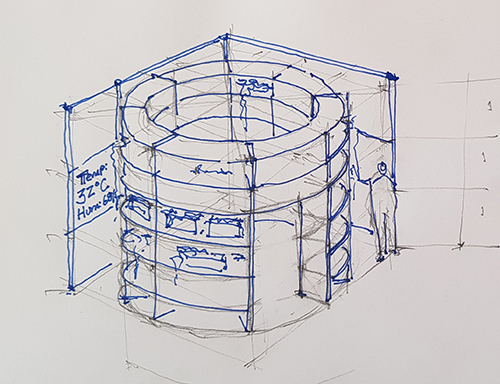1. Principles and practices¶
Week 01a / Jan 26¶
This week I worked on defining my final project idea and started to getting used to the documentation process.
Key points of the week¶
Principle 1:¶
On our first class (Jan 26) Neil presented this idea.
“Fab Academy is not a project management class. But without project management, you will not be able to finish the Academy successfully”.
So very fast it became quite clear that a fast paced, context complex and decentralized course would require some form or systematic remote collaboration that makes sense.
In this sense the array of tools we are presented with in the first week is quite amazing. Especially for people like me with absolutely zero previous knowledge of programming. The problem of remote collaboration and synchronization however it was not unknown to me, or to the teams I work with, both at CIDi FADA and outside academia. Since before COVID we have been using platforms of collaboration like G Suite or Dropbox to work in a decentralized way. GitLab and the website templates are new tools for this collaboration.
Principle 2:¶
We also discussed the idea of going from Scarcity to Abundance. I think the key to this is to unleash potentialities you did not know about before, by acquiring new skills. I am sure Fab Academy will be a great place for this.
Principle 3:¶
Supply-side time management: do the best you can on the assigned time and move on to the next activity.
Principle 4:¶
Outward spiral development: Develop progressively more rich versions of your project, making sure each version is functional.
Final Project - first iteration¶
Digital Greenhouse Project:
I am interested in developing a Digital Greenhouse Project that may be implemented both in rural or urban areas in Paraguay. The goal of this greenhouse infrastructure would be to facilitate the cultivation of alternative organic crops such as Stevia Rebaudiana.
In terms of functionality, the Digital Greenhouse will: monitor and report on key variables in real time (temperature, humidity, etc), and allow for remote and/or automated control of simple systems such as irrigation, ventilation, etc.
In terms of size, I believe a fully functional prototype can be developed in approximately 3m x 3m cube. A scaled model (1/3 to 1/2 of full size) may be built for the Fab Academy (to be discussed)
It may incorporate a second shade “skin” to protect from harsh sun, specially in summer months. (to be discussed)
Even when incorporating innovation and technology, it should be a simple, modular and sturdy, both in the structural components and in the electronics. Easy to fabricate, assemble, repair and integrate in series in order to expand or decrease according to need
